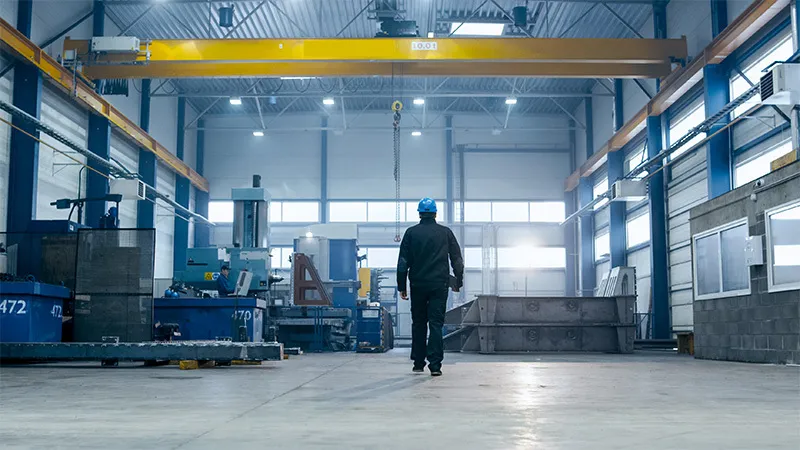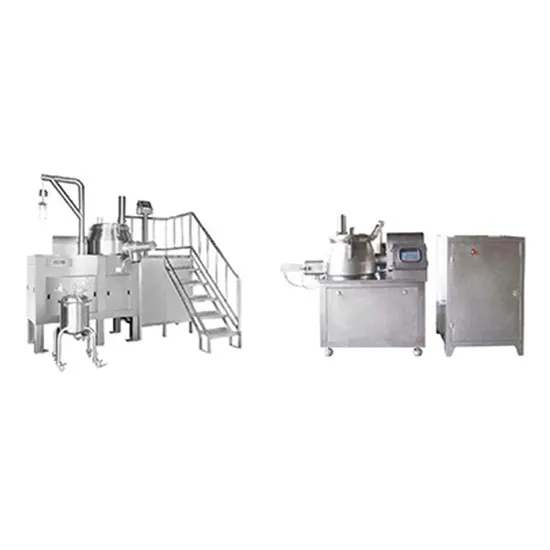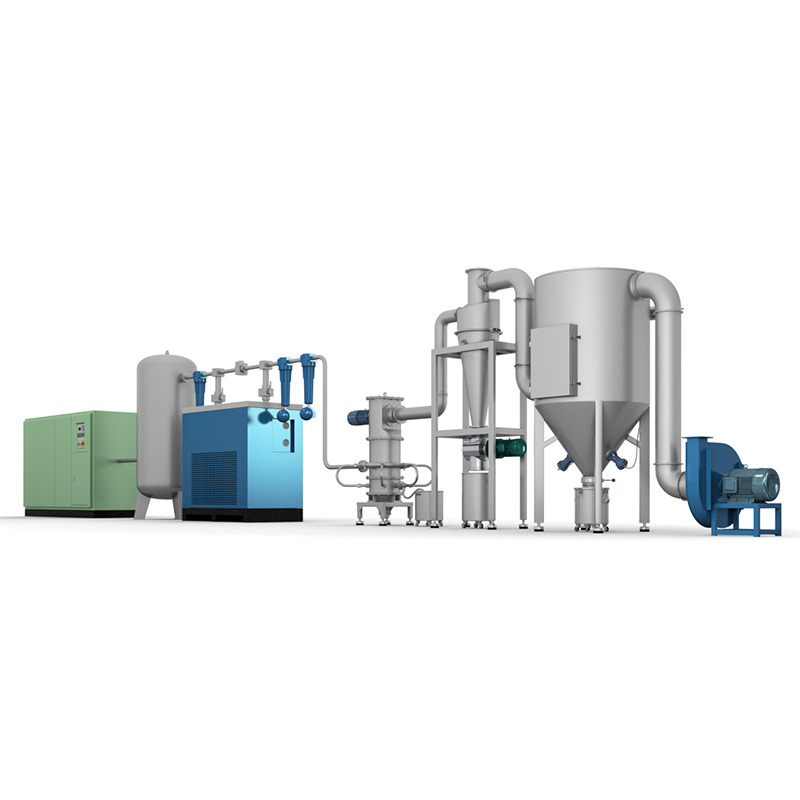NEWS
Unlocking Efficiency: How a Dry Granulator Machine Transforms Production
Nov 10,2025
Unlocking Efficiency: How a Dry Granulator Machine Transforms Production
Table of Contents
- 1. Introduction to Dry Granulator Machines
- 2. Importance of Granulation in Production
- 3. Working Principle of Dry Granulator Machines
- 4. Types of Dry Granulators
- 5. Key Benefits of Using Dry Granulator Machines
- 6. Applications of Dry Granulator Machines in Various Industries
- 7. Technological Advancements in Dry Granulation
- 8. Challenges and Solutions in Dry Granulation
- 9. Frequently Asked Questions
- 10. Conclusion
1. Introduction to Dry Granulator Machines
Dry granulator machines are pivotal in ensuring efficiency within various manufacturing processes. These machines convert powdered materials into granules, enhancing their flow characteristics and making them easier to handle. The granulation process is essential in industries such as pharmaceuticals, food production, and chemical manufacturing, where consistent particle size and density significantly affect product quality. By understanding the role and functionality of dry granulator machines, manufacturers can optimize their production procedures and achieve enhanced efficiency.
2. Importance of Granulation in Production
Granulation is a critical step in the production of many products. It helps in:
Improving Flowability
Fine powders can clump together or behave inconsistently, leading to difficulties during processing. Granulation helps in improving the flowability of materials, ensuring smooth and uniform distribution during manufacturing.
Enhancing Product Quality
The granulation process allows for better control over the physical properties of the final product, such as particle size, density, and dissolution rates. This leads to improved bioavailability in pharmaceuticals and enhanced texture in food products.
Reducing Dust Generation
Dust can pose a safety hazard and affect the quality of products. Granulation minimizes dust generation, making the manufacturing process safer and cleaner.
3. Working Principle of Dry Granulator Machines
The dry granulation process primarily involves two main steps: compaction and granulation.
Compaction
Initially, the dry granulator compresses the powder into sheets or ribbons using rollers. This stage is pivotal as it applies pressure to the powder, causing the particles to bond together without the need for a liquid binder.
Granulation
Once the sheets are formed, they are then broken down into granules of desired size through milling or other size-reduction techniques. This process ensures uniformity in particle size and enhances the product’s flowability.
4. Types of Dry Granulators
Dry granulators are typically categorized based on their operating principles and designs. Here are the primary types:
Roller Compactors
These are the most common dry granulators, using two counter-rotating rollers to apply pressure to the powder. They are known for their efficiency and ability to handle a wide range of materials.
Tablet Press Granulators
These machines combine tablet pressing and granulation processes into one. They are ideal for producing tablets directly from powders, saving time and resources.
High-Shear Granulators
Though typically used for wet granulation, some high-shear granulators can operate under dry conditions, offering versatility in production processes.
5. Key Benefits of Using Dry Granulator Machines
Utilizing dry granulator machines can provide numerous benefits, making them an essential investment for manufacturers.
Cost-Effectiveness
Dry granulation eliminates the need for wet binders and drying stages, reducing production costs significantly. This efficiency translates into higher profit margins.
Energy Efficiency
By streamlining the granulation process, these machines consume less energy compared to traditional methods that require additional drying.
Space-Saving Design
Dry granulators are typically compact, allowing manufacturers to save valuable floor space, which is especially beneficial for smaller facilities.
Versatility
These machines can handle a diverse range of materials, from powders to granules, making them suitable for various industries.
6. Applications of Dry Granulator Machines in Various Industries
Dry granulator machines are utilized across a multitude of sectors:
Pharmaceutical Industry
In pharmaceuticals, dry granulators are essential for producing tablets and capsules, ensuring uniformity in dosage and enhancing the bioavailability of drugs.
Food Industry
These machines are used in the food industry to process ingredients such as spices and flavor enhancers, maintaining quality while improving shelf life.
Chemical Industry
Dry granulation is crucial in the chemical industry for producing fertilizers and other chemical compounds, enhancing their flow and handling properties.
7. Technological Advancements in Dry Granulation
The field of dry granulation is continuously evolving, with advancements aimed at improving efficiency and product quality.
Automated Control Systems
Modern dry granulators come equipped with advanced control systems that monitor and adjust parameters in real-time, ensuring consistent output quality.
Enhanced Material Handling
Innovative designs facilitate easier loading and unloading of materials, reducing downtime and increasing overall productivity.
Sustainability Practices
Recent technological advancements focus on reducing waste and enhancing energy efficiency, aligning with global sustainability goals.
8. Challenges and Solutions in Dry Granulation
While dry granulators offer numerous advantages, challenges may arise.
Material Limitations
Not all materials are suitable for dry granulation. It’s essential to evaluate the properties of the material before proceeding with this method.
Solution
Conducting preliminary tests can help determine the compatibility of materials with dry granulation processes.
Equipment Maintenance
Like all machinery, dry granulators require regular maintenance to ensure optimal performance.
Solution
Implementing a routine maintenance schedule can mitigate potential issues and prolong the life of the equipment.
9. Frequently Asked Questions
What is a dry granulator machine?
A dry granulator machine compresses powdered materials into granules without the use of moisture, enhancing flowability and handling properties.
How does dry granulation differ from wet granulation?
Dry granulation does not use liquid binders, while wet granulation involves creating a wet mass before forming granules.
What are the benefits of using a dry granulator machine?
Benefits include cost savings, energy efficiency, reduced dust generation, and improved product quality.
In which industries are dry granulator machines commonly used?
They are widely used in pharmaceuticals, food production, and chemical manufacturing.
How can I maintain my dry granulator machine?
Regular cleaning, lubrication, and component checks can help maintain the machine's performance and extend its lifespan.
10. Conclusion
In conclusion, dry granulator machines play a crucial role in transforming production processes across various industries. By enhancing efficiency, reducing costs, and improving product quality, these machines represent a significant advancement in manufacturing technology. As industries continue to evolve, the adoption of dry granulation will likely increase, making it essential for manufacturers to stay informed about the latest trends and innovations. Investing in dry granulator machines can lead to a more streamlined, efficient, and profitable production process, positioning organizations at the forefront of their respective markets.
More News










